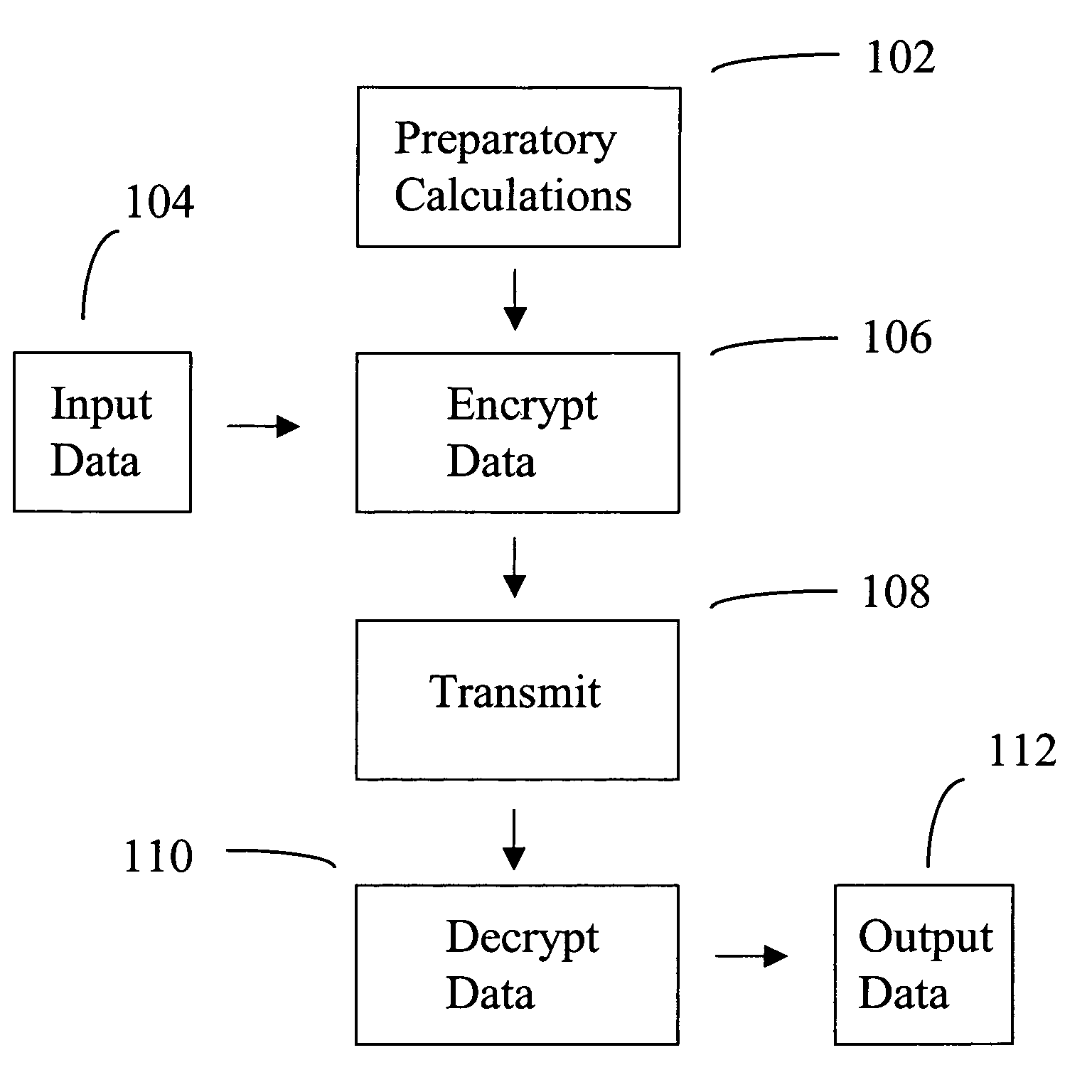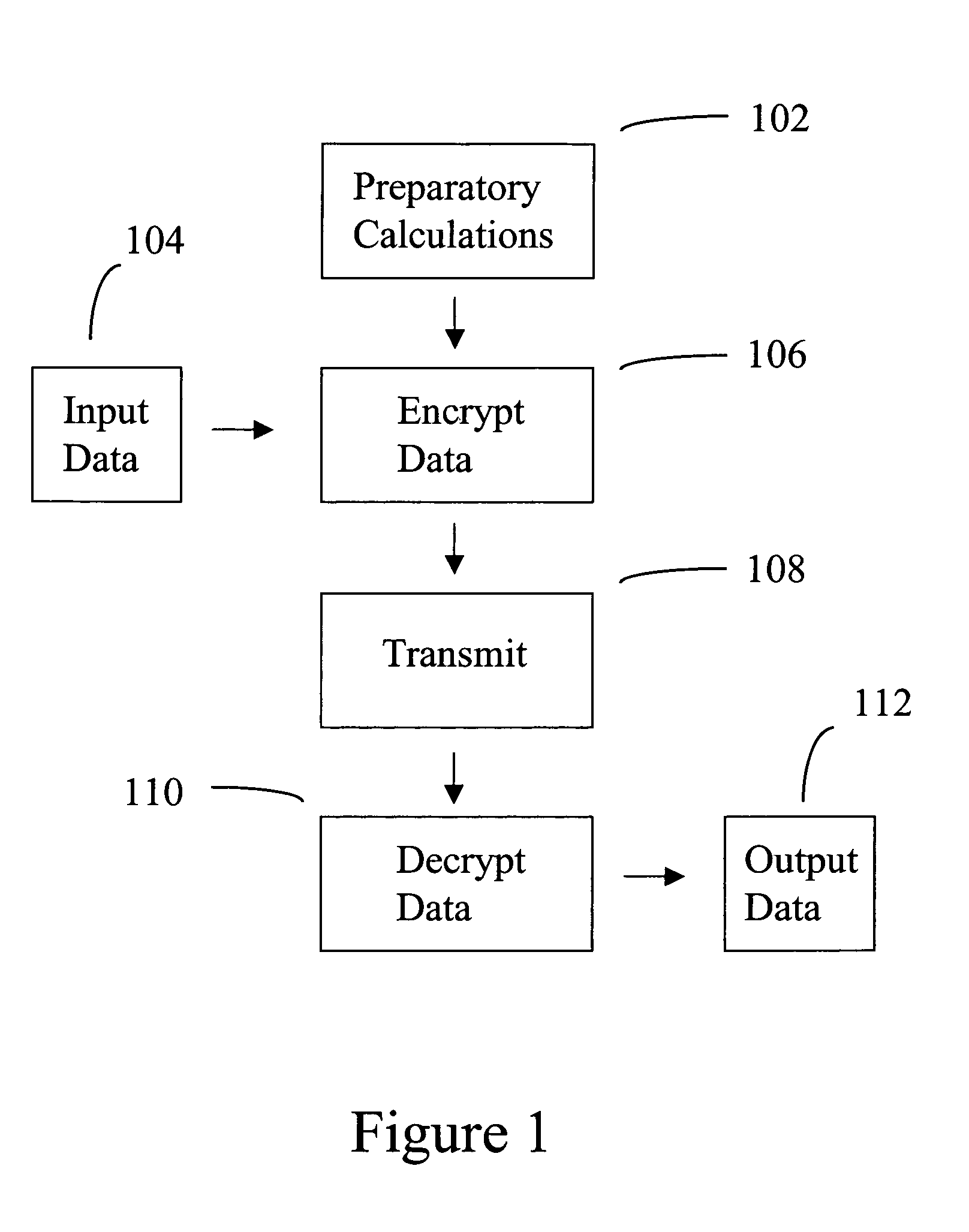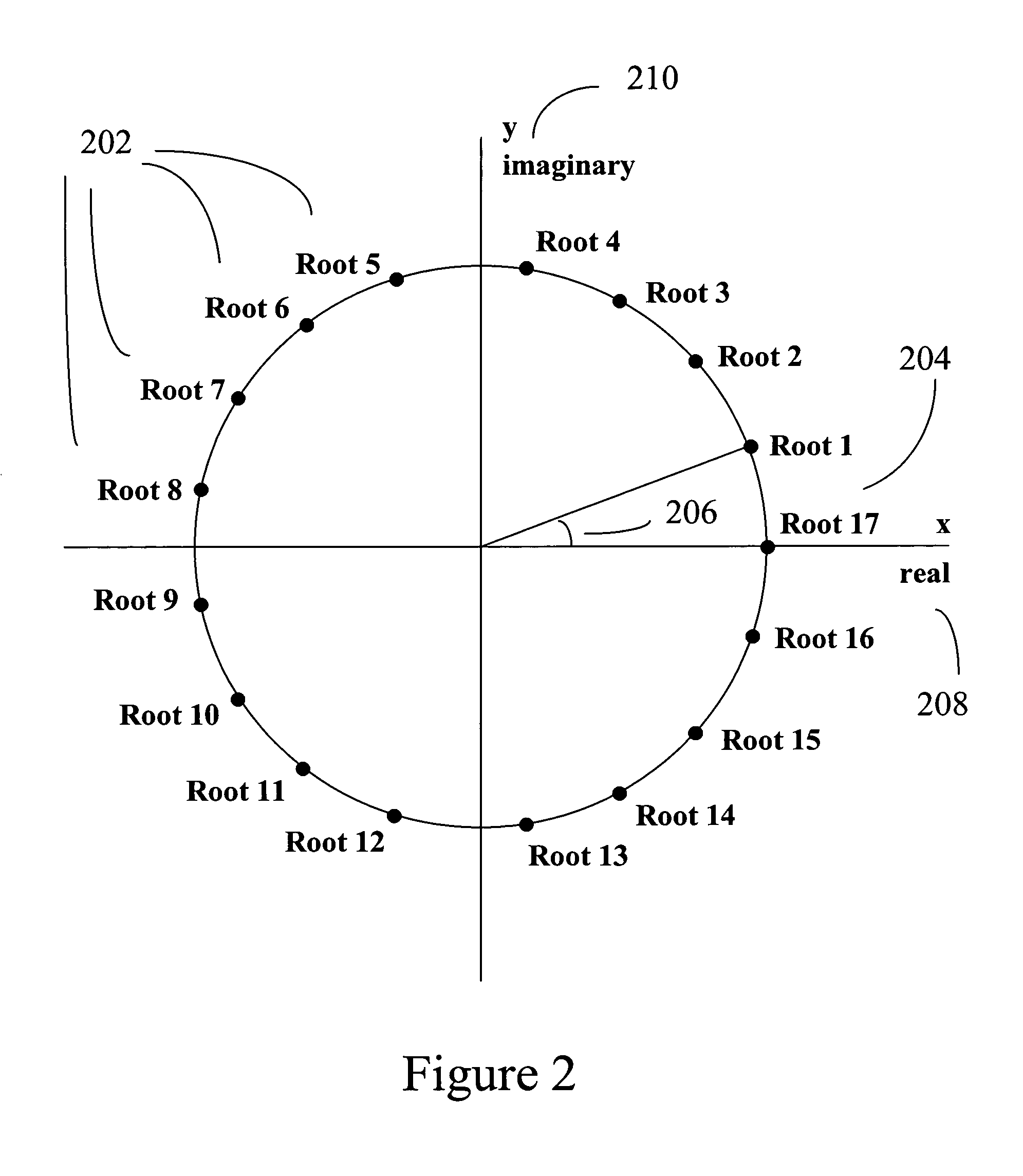Cryptographic method for color images and digital cinema
a color image and digital cinema technology, applied in the field of cryptography, can solve the problems of financial loss, digital movie useless to a third party who pirates, third parties that cannot intercept and decrypt data without authorization, etc., and achieve the effect of more secure cryptographic system
- Summary
- Abstract
- Description
- Claims
- Application Information
AI Technical Summary
Benefits of technology
Problems solved by technology
Method used
Image
Examples
example 1
[0069]An 8 bit pixel value, 125, from a monochrome image will be encrypted using an elliptical curve according to that taught in the current art. The encrypted pixel value will be sent from the Sender to the Receiver, and it will be decrypted by the Receiver.
[0070]The rules for the addition and multiplication of points on elliptical curves, which are used in this example, are well known in the art and are described in such textbooks as Implementing Elliptical Curve Cryptography by Michael Rosing (Manning Publications, 1999, pages 109–122).
[0071]Referring to Step 102 in FIG. 1, the elliptical equation coefficients, base point B, and point Pr are calculated.
[0072]The coefficients for equation (1) are chosen as K1=1 and K2=1, resulting in the following elliptical curve equation:
y2+xy=x3+x2+1 (15)
The base point B is chosen by picking a random number as the x value in equation (15) and evaluating for y. The value of x is chosen as 21, and equation (15) reduces to the following quadratic...
example 2
[0083]An 8 bit pixel with red, green, and blue (RGB) values of 35, 125, and 26 from a color image will be encrypted using an elliptical curve according to that taught in the current art. The encrypted pixel value will be sent from the Sender to the Receiver, and it will be decrypted by the Receiver. The RGB values of the color pixel will each be treated as if they were separate monochrome pixel values, and the calculations are done as described in Example 1.
[0084]Referring to Step 102 in FIG. 1, the coefficients for the elliptical curve are K1=1 and K2=1, the base point B is (21, 88.5618), and point Pr is (0.90943, 1.21155), all as in Example 1.
[0085]Referring to Step 104 in FIG. 1, the data to be encrypted is partitioned into blocks. The RGB pixel values, 35, 125, and 26 are considered as three separate blocks of data for this example.
[0086]Referring to Step 106 in FIG. 1, the Sender will calculate the P1 and P2 points. Point P1 is the same for all the RGB pixel values, and is (0.3...
example 3
[0092]An 8 bit pixel value, 125, from a monochrome image will be encrypted using a cyclotomic curve according to an embodiment of the invention. The encrypted pixel value will be sent from the Sender to the Receiver, and it will be decrypted by the Receiver.
[0093]Referring to Step 102 in FIG. 1, the coefficients and the roots of the cyclotomic polynomial, base point B, and point Pr are calculated.
[0094]The cyclotomic polynomial is generated from equation (10) with d=17. Since the number, 17, is prime, the cyclotomic polynomial is generated with equation (11) resulting in
x16+x15+x14+x13+x12+x11+x10+x9+x8+x7+x6+x5+x4+x3+x2+x+1=0 (18)
[0095]There are 16 roots for equation (18). As taught in mathematical textbooks, such as A First Course in Abstract Algebra by Joseph Rotman (Prentice-Hall Inc. 1996), the roots are all complex numbers and are points on the unit circle on the complex plane. The complex plane is normally depicted as a two dimensional plot where the x-axis represents the re...
PUM
 Login to View More
Login to View More Abstract
Description
Claims
Application Information
 Login to View More
Login to View More - R&D
- Intellectual Property
- Life Sciences
- Materials
- Tech Scout
- Unparalleled Data Quality
- Higher Quality Content
- 60% Fewer Hallucinations
Browse by: Latest US Patents, China's latest patents, Technical Efficacy Thesaurus, Application Domain, Technology Topic, Popular Technical Reports.
© 2025 PatSnap. All rights reserved.Legal|Privacy policy|Modern Slavery Act Transparency Statement|Sitemap|About US| Contact US: help@patsnap.com



